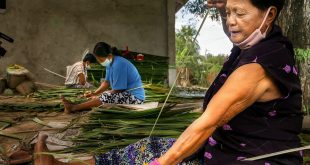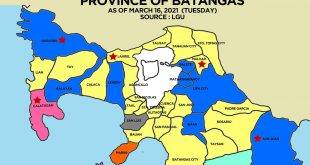Visit the Lobo page for all information on Lobo.
Prior to the arrival of the Spanish colonizers in the Philippines, this place was just a wilderness of thick forest without any permanent name attached. Semi-civilized inhabitants were scattered and no distinct community was formed during that period. Most of the settlers were hunters who roam from place to place seeking for wild animals as their means of livelihood.
However, some archaeologist believe that small group of Chinese traders during the pre–Spanish occupation have stayed for sometime in this place. This belief was based on the remains that were unearthed in a certain hill in Barangay Sawang, which is presumed to be a small Chinese cemetery during the ancient period due to the kind of kitchen wares that were found beside their graves.
The coming of the ten Bornean datus in the Philippines, headed by Datu Puti in the middle of 13th century had contributed a vital part in this history of this municipality. History stated that after Datu Puti and his followers purchased the island of Panay from King Marikudo and his wife Maniwantiwan by a golden salukot, and after fully establishing a colony in the island, Datu Puti with Datu Balkasusa and Datu Domangsil left Panay and sailed northward in search from greener pastures.
This group reached Batangas and caused the founding of the first Malayan colony in Luzon. They first settled the eastern and western sides of Pansipit River which are now Lemery and Taal and later on, they scattered in the province settling Kumintang which is now named in honor of Lakan Kumintang.
The most adventurous follower of Lakan Kumintang was Gat Bahaghari. With his family and a handful of followers, they traveled south to Rosario and trailing along Rosario – Lobo River, they reached the rainbow shaped “Wawa of Lobo” which his followers named it Bahaghari in honor of their leader. On the side of this Bahaghari or Wawa ng Lobo, now lays the famous Gerthel Beach of Fabrica.
Attracted by the panoramic view and soil fertility of this place, Gat Bahaghari and his followers decided to establish a permanent settlement in this area. So that they can easily detect the coming of the pirates that may harass their peaceful living, they built their houses on the top of a hill overlooking the sea which is now the Municipal Cemetery of Lobo, north of the Poblacion.
Beneath this hill on the west side is low land treasured with “sumasagitsit” or running tiny streams of water which they utilized to irrigate their farms. With the help of this sumasagitsit streams their farms became very productive that enabled them to transport their excess products to their bountiful harvests, they eagerly replied that they came from sumasagitsit. The term sumasagitsit was later on changed to Masagitsit which became the name of Barangay Masaguitsit, a barrio that lies on the northwest part of this municipality.
The period of the Spanish colonization of the archipelago brought many changes in the life situations in this place. Construction of bigger and stronger houses and other buildings were introduced in the country, and Lobo, being so rich in raw materials for construction purposes, attracted many loggers and timberman from other places to immigrate in. Residents of the places that were fully occupied were the lowland northwest of LoboRiver which is now Poblacion.
How Lobo gets its name is a story that handed down from generation to generation of Lobo people. It was perhaps during the middle part of the Spanish regime in the country when one evening a group of
settlers residing in the place which is now the Poblacion, gathered together to talk and decide as to what name they will call the place, when suddenly over Mount Banoy they saw a balloon.
Everybody watched and eagerly waited for the balloon to fall down. They all witnessed the falling of said balloon which was believed that it was flown from the town of Batangas, now BatangasCity which was confidentially celebrating the eve of their town fiesta. Because of that very wonderful incident which confidentially took place, they unanimously agreed that “LOBO” meaning balloon be adopted.
Since then, their particular place was named “LOBO”, and became the name of entire municipality when it became an independent town. Originally a logging settlement, Lobo was founded on September 27, 1871.
Online Reference: www.lobo.gov.ph
Last Updated: September 5, 2013
 WOWBatangas.com Your Source of Great News and Stories from the Province of Batangas, Philippines
WOWBatangas.com Your Source of Great News and Stories from the Province of Batangas, Philippines



